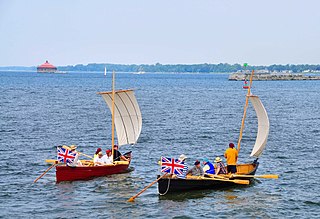 W
WA bateau or batteau is a shallow-draft, flat-bottomed boat which was used extensively across North America, especially in the colonial period and in the fur trade. It was traditionally pointed at both ends but came in a wide variety of sizes. The name derives from the French word, bateau, which is simply the word for boat and the plural, bateaux, follows the French, an unusual construction for an English plural. In the southern United States, the term is still used to refer to flat-bottomed boats, including those elsewhere called jon boats.
 W
WBobsleigh or bobsled is a team winter sport that involves making timed runs down narrow, twisting, banked, iced tracks in a gravity-powered sleigh. International bobsleigh competitions are governed by the International Bobsleigh and Skeleton Federation, also known as FIBT from the French Fédération Internationale de Bobsleigh et de Tobogganing. National competitions are often governed by bodies such as the United States Bobsled and Skeleton Federation and Bobsleigh Canada Skeleton.
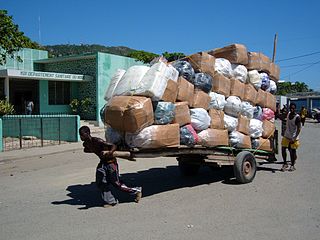 W
WA cart or dray is a vehicle designed for transport, using two wheels and normally pulled by one or a pair of draught animals. A handcart is pulled or pushed by one or more people.
 W
WA caster board, vigorboard or waveboard is a two-wheeled, human-powered land vehicle. Other names are J-board and RipStik, both of which are derived from commercial brands.
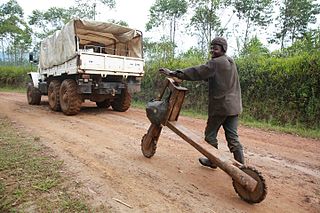 W
WThe chukudu is a two-wheeled handmade vehicle used in the east of the Democratic Republic of Congo. It is made of wood, and is used for transporting cargo.
 W
WA corf also spelt corve in mining is a wicker basket or a small human powered minecart for carrying or transporting coal, ore, etc. Human powered corfs had generally been phased out by the turn of the 20th century, with horse drawn corfs having been mostly replaced by horse drawn or motorised minecarts mounted on rails by the late 1920s. Also similar is a Tram, originally a box on runners, dragged like a sledge.
 W
WCradleboards are traditional protective baby-carriers used by many indigenous cultures in North America and throughout northern Scandinavia amongst the Sámi. There are a variety of styles of cradleboard, reflecting the diverse artisan practices of indigenous cultures. Some indigenous communities in North America still use cradleboards.
 W
WA figurative palanquin connected with the totem of its owner is a special kind of litter used in the Greater Accra Region in Ghana. These palanquins called in the Ga language okadi akpakai belong to the royal insignias and are used only by the Ga kings or mantsemei and their sub-chiefs when they are carried in public at durbars and festivals like Homowo. With these figurative palanquins the Ga create ethnic differences between themselves and their Akan neighbours that only use simple boat- or chair-shaped litters.
 W
WA float tube, also known as a belly boat or kick boat, is a small, lightweight inflatable fishing craft which anglers use to fish from. They were originally doughnut-shaped boats with an underwater seat in the "hole." Still, modern designs include a V-shape with pontoons on either side and the seat raised above the water allowing the legs of the angler to be the only part of the body to be submerged. Float tubes are used for many aspects of fishing, such as flyfishing for trout or lure fishing for largemouth bass, and enable the angler to fish areas otherwise not fishable from the bank.
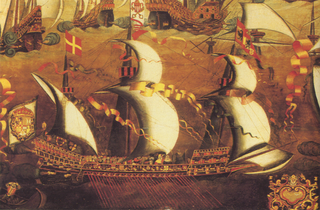 W
WGalleasses were military ships developed from large merchant galleys, and intended to combine galley speed with the sea-worthiness and artillery of a galleon. While perhaps never quite matching up to their full expectations, galleasses nevertheless remained significant elements in the early modern naval armoury for some considerable time.
 W
WA handcar is a railroad car powered by its passengers, or by people pushing the car from behind. It is mostly used as a maintenance of way or mining car, but it was also used for passenger service in some cases. A typical design consists of an arm, called the walking beam, that pivots, seesaw-like, on a base, which the passengers alternately push down and pull up to move the car.
 W
WA handcycle is a type of human-powered land vehicle powered by the arms rather than the legs, as on a bicycle. Most handcycles are tricycle in form, with two coasting rear wheels and one steerable powered front wheel. Despite usually having three wheels, they are also known as handbikes.
 W
WA hobcart was a type of mobility device designed in the late 1960s by Dr. Steven Perry of Albrighton, Shropshire, UK. In his practice he had two young children, both of whom had spina bifida. He considered that the wheelchairs the children were provided with were liable to set them apart from other children of their age, so set about designing a mobility device, that would look like a go-kart. The end result was the hobcart, which when it was first made, was produced at a local borstal. The idea behind this was to try to provide the inmates of the borstal the opportunity to be involved in a project which they could see was doing some good. Hobcarts were still being made into the 1980s.
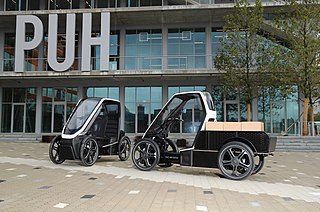 W
WA human–electric hybrid vehicle is a hybrid vehicle, or more specifically a hybrid human-powered vehicle, whose drivetrain consists of a human being and an electric motor/generator. Some vehicles are able to operate off both human power and be plugged in to operate on battery power.
 W
WA human-powered hydrofoil is a small hydrofoil watercraft propelled entirely by the muscle power of its operator(s). Hydrofoils are the fastest water-based vehicles propelled solely by human power. They can reach speeds of up to 34 km/h, easily exceeding the world records set by competitive rowing which stand at about 20 km/h. This speed advantage is achieved since hydrofoils lack a submerged body to provide buoyancy, greatly reducing the drag force.
 W
WHuman-powered land vehicles are land vehicles propelled over ground by human power. The main ways to support the weight of a human-powered land vehicle and its contents above the ground are rolling contact; sliding contact; intermittent contact; no contact at all as with anything carried; or some combination of the above. The main methods of using human power to propel a land vehicle are some kind of drivetrain; pushing laterally against the ground with a wheel, skate, or ski that simultaneously moves forward; by pushing against the ground directly with an appendage opposite to the direction of travel; or by propeller. Human-powered land vehicles can be propelled by persons riding in the vehicle or by persons walking or running and not supported by the vehicle.
 W
WA hydrocycle is a bicycle-like watercraft. The concept was known in the 1870s under the title 'water velocipede' and the name was in use by the late 1890s.
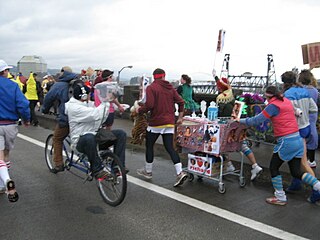 W
WThe Idiotarod is a shopping cart race in which teams of five or more "idiots" with a grocery store shopping cart run through the streets of a major metropolitan area. The carts are usually themed and feature people in costumes. The races are fun competitions where sabotage, costume, and presentation, and other efforts are rewarded; some cities offer a "Best in Show" prize. Sabotage, such as tripping competitors, throwing marbles or large obstacles in their paths, and the spreading of misinformation such as false route information, were common in the early years. A push for "leave no trace" actions has been promoted recently.
 W
WIvlia (bireme) is a modern reconstruction of an ancient Greek rowing warship (galley) with oars at two levels and an example of experimental archaeology. Between 1989 and 1994, this vessel undertook six international historical and geographical expeditions in the footsteps of the ancient seafarers.
 W
WJumping stilts, bounce stilts or spring stilts are special stilts that allow the user to run, jump and perform various acrobatics. Spring stilts using fiberglass leaf springs were patented in the United States in 2004 under the trademark "PowerSkip", marketed for recreational and extreme sports use. Spring stilts are often mostly made of aluminium. Using these stilts is also called "bocking" or "powerbocking", a corrupted version of the name of the stilts' inventor, Alexander Böck.
 W
WA kago (駕籠) is a type of litter used as a means of human transportation by the non-samurai class in feudal Japan and into the Meiji period.
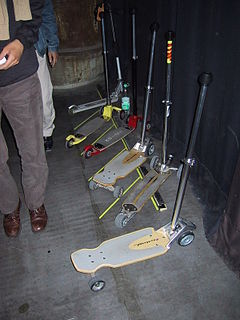 W
WA kick scooter is a human-powered street vehicle with a handlebar, deck, and wheels propelled by a rider pushing off the ground with their Legs. Today, the most common scooters are made of aluminum, titanium, and steel. Some kick scooters made for younger children have 3 to 4 wheels and are made of plastic or don't fold. High-performance kickbikes also are made.
 W
WA kickbike is a type of kick scooter and is a human-powered street vehicle with a handlebar, deck, and wheels propelled by a rider pushing off the ground. The kickbike often has a large standard size bicycle front wheel and a much smaller rear wheel, which allows for a much faster ride.
 W
WThe kicksled or spark is a small sled consisting of a chair mounted on a pair of flexible metal runners that extend backward to about twice the chair's length. The sled is propelled by kicking the ground by foot. There is a handlebar attached to the top of the chair back. "Kicksled" is a direct translation of the Finnish word "potkukelkka". Some other possible translations are "kicker" and "chair-sled".
 W
WA knee scooter or knee walker is a two, three or four-wheeled alternative to crutches or a traditional walker as an ambulation aid. It is known by many other names, such as knee coaster, knee cruiser, knee caddy, orthopaedic scooter, or leg walker.
 W
WThe litter is a class of wheelless vehicles, a type of human-powered transport, for the transport of persons. Smaller litters may take the form of open chairs or beds carried by two or more carriers, some being enclosed for protection from the elements. Larger litters, for example those of the Chinese emperors, may resemble small rooms upon a platform borne upon the shoulders of a dozen or more people. To most efficiently carry a litter, porters either place the carrying poles directly upon their shoulders or use a yoke to transfer the load from the carrying poles to the shoulders.
 W
WA luge is a small one- or two-person sled on which one sleds supine and feet-first. A luger steers by using the calf muscles to flex the sled's runners or by exerting opposite shoulder pressure to the seat. Racing sleds weigh 21–25 kg (46–55 lb) for singles and 25–30 kg (55–66 lb) for doubles. Luge is also the name of an Olympic sport.
 W
WOmer is the name of a series of human-powered submarines. The submarines were built by students of the École de technologie supérieure in Montreal, Quebec, for the International Submarine Races. As of 2014, Omer teams hold the human-powered submarine world speed records for two-seater and non-propeller categories. Those records are :
 W
WThe People Powered Vehicle, or PPV, was a two-person pedal-powered car introduced in the United States during the oil crisis of the early 1970s. Manufactured by EVI of Sterling Heights, Michigan, it sold for less than $400. Although it offered luggage space and was marketed as a fun and practical vehicle, it offered limited weather protection and was not fast enough to substitute for a car.
 W
WA pulk is a Nordic short, low-slung small sled used in sport or for transport, pulled by a dog or a skier, or in Lapland pulled by reindeer. They are classically made out of wood and other natural materials but are nowadays made of plastic, which makes them inexpensive.
 W
WThe QuattroVelo is a commercial-production velomobile which is notable for using both four wheels and also a highly aerodynamic fairing. The QuattroVelo is manufactured by Velomobiel.nl in the Netherlands, with the first production models delivered in 2016.
 W
WA rickshaw originally denoted a two- or three-wheeled passenger cart, now known as a pulled rickshaw, which is generally pulled by one person carrying one passenger. The first known use of the term was in 1879. Over time, cycle rickshaws, auto rickshaws, and electric rickshaws were invented, and have replaced the original pulled rickshaws, with a few exceptions for their use in tourism.
 W
WRickshaw art or auto art is a form of neo-romanticism emerging in Bangladesh.
 W
WRickshaws are used in numerous cities in the United States, primarily for their novelty value as an entertaining form of transportation for tourists and locals. However, they also have environmental benefits and may be quicker than other forms of transport if traffic congestion is high. Various laws regulate their use in different areas.
 W
WA royal funeral chariot is a wheeled vehicle traditionally used to transport the bodies of royalty during funeral processions in some cultures of Mainland Southeast Asia. Today, they remain in use in Thailand and Cambodia.
 W
WThe rushcart ceremony is an English tradition where parishioners process around their parish once a year, bearing rushes. They would end up at the parish church and place the rushes on the floor of the church, to replace worn-out rushes. In modern times the ceremony is practised only in parts of northern England including Lancashire and Cumbria.
 W
WThe sandolo is a traditional, flat-bottomed Venetian rowing boat designed for the generally shallow waters of the Venetian Lagoon. The Italian plural is sandoli.
 W
WShweeb is a proposed personal rapid transit network based on human-powered monorail cars. The project prototype was originally designed and implemented in Rotorua, New Zealand as a leisure attraction. In September, 2010, a proposal for development of an expanded network was chosen to receive funding from Google as part of project 10100.
 W
WA sled, sledge, or sleigh is a land vehicle that slides across a surface, usually of ice or snow. It is built with either a smooth underside or a separate body supported by two or more smooth, relatively narrow, longitudinal runners similar in principle to skis. This reduces the amount of friction, which helps to carry heavy loads.
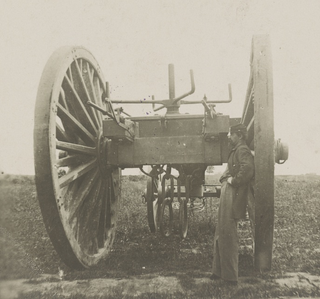 W
WA sling cart is used to transport very heavy objects over land. The cart has a skeletal frame with large-diameter wheels so the object being transported can be suspended above the ground by ropes or chains below the level of the axle. Typical sling carts have two wheels on a single axle with a long pole or tongue perpendicular to the axle for use as a lever. In the days of muzzle-loading cannon, sling carts were used to move heavy artillery from the place of manufacture or storage to a ship or fortification where the gun would be placed on a gun carriage. Specialized sling carts with two axles and four wheels were used to carry the heaviest guns. Smaller field guns were often transported on their gun carriage, but portable gun carriages were unable to withstand the recoil energy of very large guns.
 W
WThe south-pointing chariot was an ancient Chinese two-wheeled vehicle that carried a movable pointer to indicate the south, no matter how the chariot turned. Usually, the pointer took the form of a doll or figure with an outstretched arm. The chariot was supposedly used as a compass for navigation and may also have had other purposes.
 W
WA toboggan is a simple sled traditionally used by children. It is also a traditional form of transport used by the Innu and Cree of northern Canada.
 W
WA travois is a historical frame structure that was used by indigenous peoples, notably the Plains Aboriginals of North America, to drag loads over land.
 W
WThe Trikke is a chainless, pedalless, personal vehicle with a three-wheel frame. The rider stands on two foot platforms above the two rear wheels and steers the vehicle with handlebars attached to the lone front wheel. The cambering system is designed to provide a stable, three-point platform that lets the rider lean into turns while all three wheels remain in contact with the ground. There are several variations of the Trikke, from body-powered fitness machines, to battery-powered transportation and personal mobility vehicles.
 W
WA velomobile, velomobiel, velo, or bicycle car is a human-powered vehicle (HPV) enclosed for aerodynamic advantage and/or protection from weather and collisions. Velomobiles are similar to recumbent bicycles, pedal go-karts and tricycles, but with a full fairing and are not to be confused with purpose-built mobiles for racing or speed records fully fared vehicles with two wheels, generally called streamliners. Streamliners have set many speed and distance records.
 W
WWaveskis also previously known as "Paddle Ski" are a type of surfboard that allows the rider to 'sit’ on top of the surfboard. Waveski surfing is a dynamic sport combining paddle power with the manoeuvrability and performance of a surfboard. A Waveski resembles a larger volume surfboard, with the addition of a seat, fins, foot straps, and seat belt, enabling the rider to 'eskimo roll' if overturned. The waveski rider or waveski surfer uses a double ended paddle for paddling motion while seated in the waveski. To turn the rider uses his weight to lean on the side rails and paddle to pivot or propel the board up the wave.
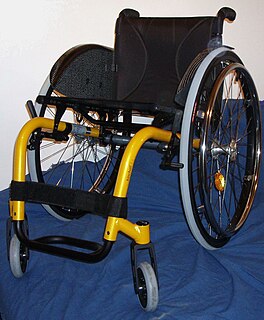 W
WA wheelchair is a chair with wheels, used when walking is difficult or impossible due to illness, injury, problems related to old age, or disability. These can include spinal cord injuries, cerebral palsy, brain injury, osteogenesis imperfecta, motor neurone disease, multiple sclerosis, muscular dystrophy, spina bifida, and more.
 W
WThe Windsor Pumpkin Regatta is an annual water race held in October on Lake Pesaquid in Windsor, Nova Scotia. The course is a half mile from start to finish. The race features brightly coloured giant pumpkins as the sole means of flotation.
 W
WWok racing is a sport developed by the German TV host and entertainer Stefan Raab: Modified woks are used to make timed runs down an Olympic bobsleigh track. There are competitions for one-person-woksleds and four-person-woksleds, the latter using four woks per sled.
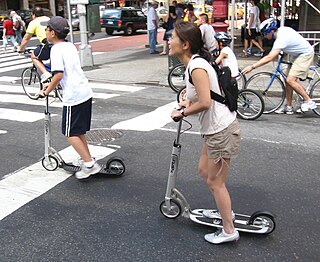 W
WXootr is a manufacturer of folding kick scooters and was formerly a seller of folding bicycles. Xootr scooters are characterized by 180 mm wheels with aluminium hubs, and a hand brake for the front wheel. Compared to the other folding scooters with smaller wheels, these larger wheels provide an easier ride, at the expense of a somewhat less easy portability. The hinge is distinguished from competitors in being locked by inserting a pin, rather than by a cam or other latch. The platform is large enough for adults, and available in plywood, magnesium, or aluminum at different prices.